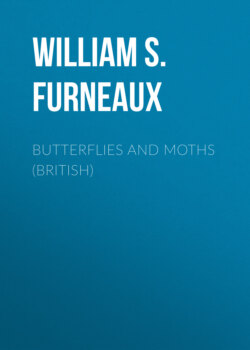Читать книгу Butterflies and Moths (British) - William S. Furneaux - Страница 6
На сайте Литреса книга снята с продажи.
ОглавлениеFig. 13.—Egg of the Vapourer Moth.
It may be surmised from the accompanying illustrations that the form of the egg is always the same for any one species. This is really the case, and consequently an experienced entomologist can often decide on the name of the butterfly or moth that deposited a cluster of eggs he happens to find in his rambles and searchings; but in such decisions he is always greatly assisted by a knowledge of the food plants of the various insects, and sometimes also by the manner in which the eggs are arranged.
We have seen that the period during which the Lepidoptera remain in the egg stage is very variable, and depends largely on the season in which they were laid; but it is often possible to tell when to expect the young larvæ by certain changes which take place in the appearance of the egg. As the horny covering of the egg is transparent, the gradual development of the caterpillar from the clear fluid can be watched to a certain extent; but if you have a microscope, and would like to witness this development to perfection, proceed as follows.
Arrange that some butterflies and moths shall lay their eggs on strips of glass of convenient dimensions for microscopic work—three inches long by one wide is the usual size for this kind of work. This is easily accomplished by placing a proper selection of female insects in a rather small box temporarily lined with such 'slips.' When a few eggs have thus been secured, all you have to do is to examine them at intervals with your microscope, always using the reflector so as to direct a strong light through the eggs from below.
But even without such an arrangement some interesting changes are to be observed. As a rule, the colour of the egg turns darker as the time for the arrival of the infant larva approaches, and you will often be able to see a little brown or black head moving slightly within the 'shell.' You may know then that the hatching is close at hand, and the movements of the tiny creature are well worth careful watching. Soon a small hole appears in the side of the case, and a little green or dark cap begins to show itself. Then, with a magnifier of some kind, you may see a pair of tiny jaws, working horizontally, and not with an up-and-down motion like our own, gradually gnawing away at the cradle, till at last the little creature is perfectly free to ramble in search of food.
Strange to say, the young larva does not waste a particle of the horny substance that must necessarily be removed in securing its liberty, but devours it with an apparent relish. Indeed, it appreciates the flavour of this viand so highly that it often disposes of the whole of its little home, with the exception of the small circular patch by which it was cemented to the plant. When the whole brood have thus dispensed with their empty cradles, there remains on the stem or leaf a glittering patch of little pearly plates.
After the performance of this feat the young caterpillar starts off in life on its own account with as much briskness and confidence as if it had previously spent a term in the world under the same conditions; but we must reserve an account of its doings and sufferings for our next chapter.
